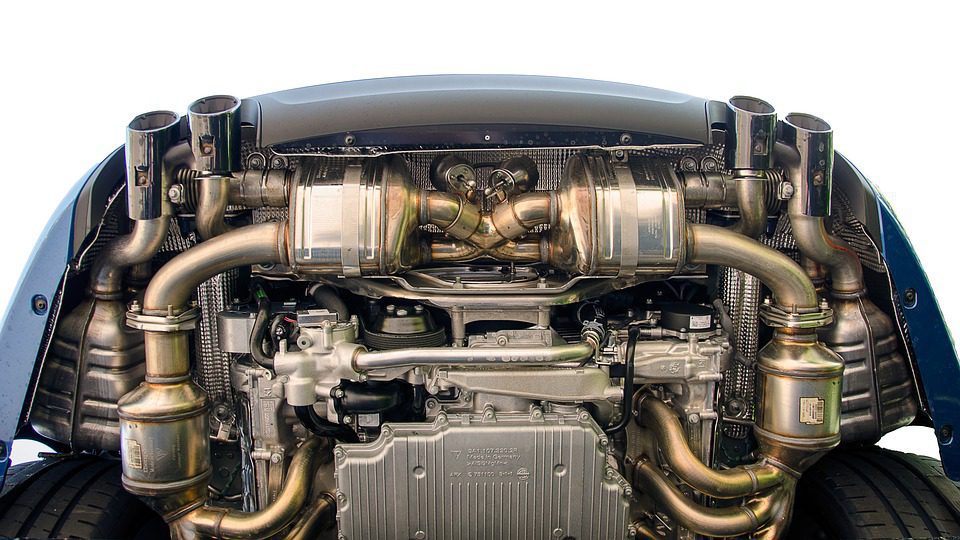Opel Corsa Engine: Common Issues and How to Fix Them
Opel Corsa Engine: Common Issues and How to Fix Them
Blog Article
Discovering the Inner Operation of a Compact Vehicle's Engine System
As motorists, we often take for approved the intricate procedures that take place within the boundaries of our vehicle's engine system. The portable yet complex machinery that pushes us onward is a marvel of design precision and coordination. From the regulated surges in the burning chamber to the meticulous timing of gas injection, every component plays a vital role in the smooth operation of the engine. In this exploration of a portable car's engine system, we will certainly untangle the inner operations of this mechanical harmony, dropping light on the secrets that drive us forward on our day-to-day trips.
Combustion Refine Summary
The combustion process in a portable car's engine system is a critical device that successfully converts fuel right into power to power the lorry. This process happens within the combustion chamber of the engine, where gas and air mix, stir up, and generate controlled surges. The burning process contains four major stages: consumption, exhaust, power, and compression.
Throughout the intake phase, the piston moves downward, drawing in a blend of air and gas into the burning chamber. This down movement generates the power required to drive the vehicle. This cyclic burning procedure is essential to the procedure of a compact automobile's engine system, ensuring efficient energy conversion for propulsion.
Piston and Cylinder Interaction

The piston's exact fit within the cyndrical tube is essential for preserving ideal compression and avoiding energy loss throughout combustion. Tight clearances between the piston and cylinder walls make certain effective securing, allowing the piston to move smoothly without allowing gases to leakage past. Appropriate lubrication is also important to reduce rubbing and use in between these elements, improving long life and performance.
Moreover, the layout and products used in manufacturing the piston and cylinder influence engine performance and resilience. Modern engines frequently use light-weight yet long lasting products like aluminum alloys for pistons and cylinder liners to lower inertia and enhance thermal performance. On the whole, the unified communication in between the piston and cyndrical tube is essential to the engine's capability and general efficiency.
Gas Shot System Capability
Gas shot systems in compact vehicle engines play a critical role in precisely delivering gas to the burning chamber for efficient and regulated ignition. The gas injection system works by infusing gas right into the combustion chamber at the optimum moment during the engine's operation (opel corsa engine). This specific timing guarantees that the gas blends equally with the air for proper combustion, resulting in boosted fuel effectiveness and reduced discharges
There are mostly 2 sorts of fuel shot systems utilized in compact car engines: port fuel shot (PFI) and straight fuel injection (DFI) PFI systems infuse gas right into the intake port prior to the consumption shutoff, while DFI systems infuse fuel directly right into the burning chamber. Both systems have their advantages, with DFI providing better gas atomization and PFI offering a more cost-efficient option.
Understanding Engine Air Conditioning Systems
Effective operation of a small car's engine relies heavily on the performance of its cooling mechanisms. Engine air conditioning is vital to avoid getting too hot, which can cause serious damages and lowered performance. The air conditioning system in a compact lorry normally includes a number of components collaborating to control the engine temperature level. One crucial part is the radiator, which uses coolant to take in heat from the engine. As the hot coolant moves via the radiator, it releases warmth into the air, cooling down before returning to the engine. The water pump distributes the coolant via the engine and radiator, making certain a constant flow to control temperature level. Furthermore, the thermostat helps regulate the coolant circulation to maintain ideal discover this engine temperature. Some lorries likewise have cooling down fans that activate when added cooling is needed, such as throughout hefty traffic or hot weather. Understanding these engine cooling mechanisms is essential for preserving the efficiency and durability of a compact vehicle's engine system.

Exhaust System Components Explained
The optimal performance of a compact vehicle's engine cooling mechanisms depends on a corresponding system recognized as the exhaust system, which consists of various necessary elements for ensuring effective emissions and engine efficiency. The exhaust manifold collects exhaust gases from the engine's cylinders and paths them to the catalytic converter.
One critical element of the exhaust system is the oxygen sensing unit, which keeps track of the oxygen levels in the exhaust gases to assist control gas consumption and guarantee optimal engine performance. opel corsa engine. In addition, the resonator may be existing in some exhaust systems to reduce noise levels. On the whole, the exhaust system plays a vital duty in keeping engine effectiveness, reducing hazardous discharges, and making certain a quieter driving experience for small car proprietors

Final Thought
To conclude, the compact car's engine system is a complicated mix of elements that interact to promote the combustion process, transform fuel right into power, and expel waste gases. Understanding the inner operations of the engine system, consisting of the piston and cylinder communication, gas shot system, engine cooling systems, and exhaust system parts, is weblink essential for preserving optimum performance and efficiency of the automobile.
The combustion process in a small car's engine system is an important mechanism that successfully transforms fuel into energy to power the automobile.Gas shot systems in small lorry engines play an important role in exactly supplying fuel to the combustion chamber for efficient and controlled ignition.There are primarily 2 types of gas shot systems used in portable vehicle engines: port gas injection (PFI) and direct gas shot (DFI) Comprehending these engine air conditioning devices is vital for keeping the performance and durability of a small vehicle's engine system.
The optimal performance of a portable car's engine cooling mechanisms depends on a corresponding system known as the exhaust system, which Homepage comprises various vital elements for guaranteeing effective discharges and engine performance.
Report this page